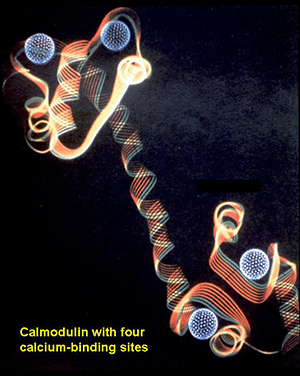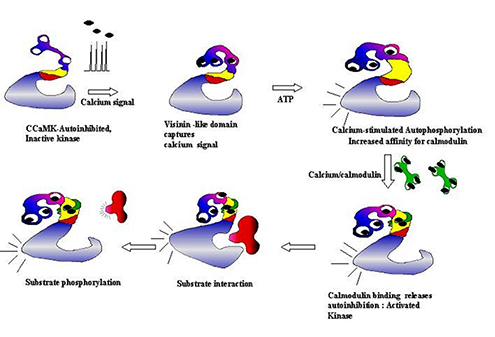Calcium/calmodulin-dependent protein kinase (CCaMK)
The structure of CCaMK is characterized by the presence of a catalytic domain, a calmodulin-binding domain, and a visinin-like calcium-binding domain in a single polypeptide; making it distinctly different from other known plant and animal kinases. Biochemical characterization of CCaMK revealed that it is regulated by both calcium and calcium/calmodulin (see Selected Publications). Below is a schematic illustrating how calcium and calmodulin are involved in its regulation.
CCaMK is a multi-functional protein kinase. It plays a major role in bacterial and fungal symbioses. CCaMK is involved in decoding the calcium signal during bacterial (Nod factor) and fungal (Myc factor) symbioses, leading to the formation of nodules and mycorrhizae.
The figure below illustrates the unique roles of CCaMK during bacterial and fungal symbioses.
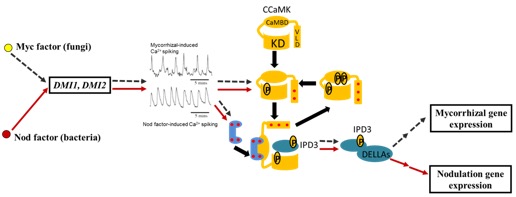
Plant symbiotic signaling pathway (Poovaiah and Du. 2018. “Calcium signaling: Decoding mechanism of calcium signatures.” New Phytologist, 217:1598-1609).
Figures below illustrate the role of calcium/calmodulin in plant defense/immunity with an emphasis on AtSR1/CAMTA3.
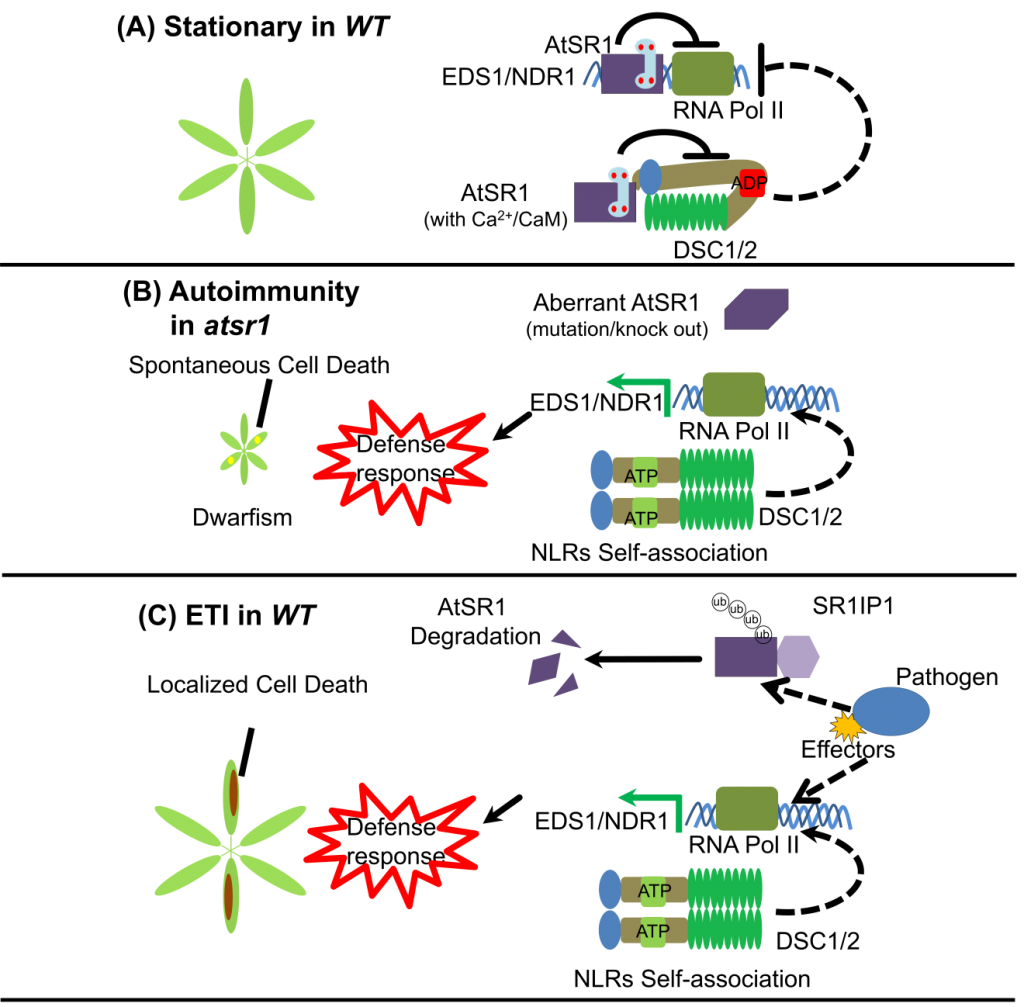

A model Illustrating AtSR1 as a negative regulator of salicylic acid activation pathway and a guardee (Yuan, P., Tanaka, K., Du, L. and Poovaiah, B.W. 2018 “Calcium signaling in plant autoimmunity: A guard model for AtSR1/CAMTA3-mediated immune response.” Molecular Plant 11, 637-639).
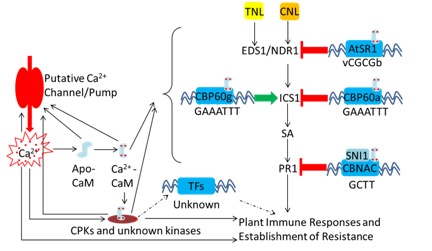
Perception and feed-in steps of Ca2+ signals in the regulatory network of plant immunity (Yuan, P., Jauregui, E., Du, L., Tanaka, K. and Poovaiah, B.W. 2017. “Calcium signatures and signaling events orchestrate plant-microbe interactions.” Curr. Opin. in Plant Biol. 38:173-183).
